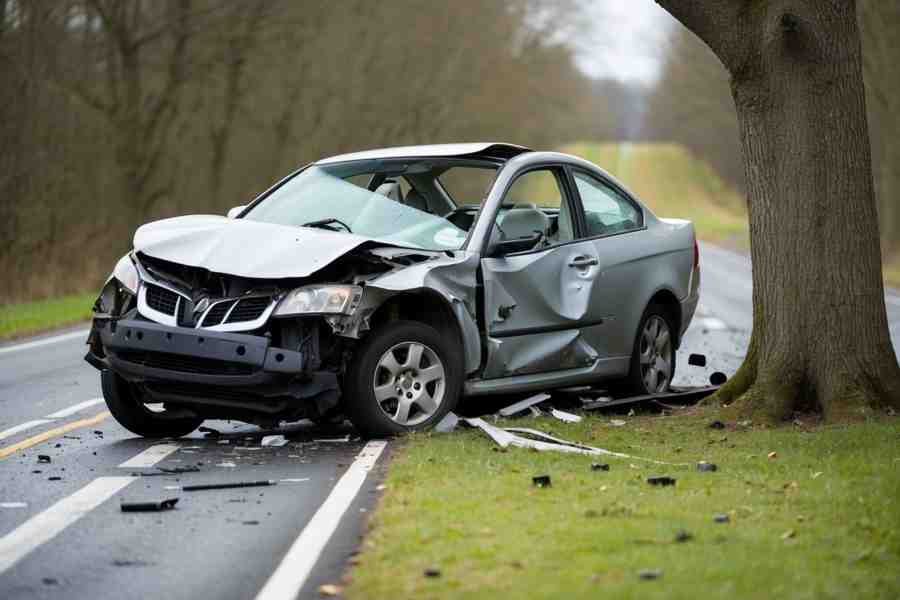Determining car accident liability involves a complex interplay of various factors, evidence, and legal principles. The concept of “flexible nexus” in this context refers to the adaptable and multifaceted approach required to establish the link between an individual’s actions and the resulting accident. This process is essential for attributing fault and ensuring that the responsible party is held accountable. Below is an in-depth explanation of how this flexible nexus operates in the determination of liability for a car accident claim in Fort Lauderdale, FL.
Understanding Nexus in Car Accident Liability
The term “nexus” refers to the connection or link between an individual’s actions and the resulting harm or damages. In car accident cases, establishing this nexus is crucial because it forms the basis for proving liability. The nexus must show that the negligent or reckless actions of a driver directly caused the accident and the subsequent damages.
Key Elements in Determining Liability
Duty of Care:
Every driver has a legal obligation to operate their vehicle in a manner that ensures the safety of others on the road. This duty includes obeying traffic laws, driving at a safe speed, and being attentive to the road and other drivers.
Breach of Duty:
To establish liability, it must be shown that the driver breached their duty of care. This breach can occur through actions such as speeding, running a red light, distracted driving, or driving under the influence.
Causation:
This is where the concept of nexus becomes particularly important. Causation involves proving that the breach of duty directly caused the accident. There are two types of causation to consider:
Actual Cause:
Also known as “cause in fact,” this requires showing that the accident would not have occurred “but for” the driver’s actions.
Proximate Cause:
This involves demonstrating that the driver’s actions were closely related to the accident and that the accident was a foreseeable result of those actions.
Damages: Finally, it must be proven that the accident resulted in actual damages, whether they are physical injuries, property damage, or other losses.
Gathering Evidence
Determining liability requires a thorough investigation and collection of evidence. This evidence can include:
Police Reports:
These often provide an initial assessment of fault and include important details such as witness statements and observations from the scene.
Eyewitness Testimony:
Witnesses can provide crucial information about the events leading up to the accident.
Traffic Camera Footage:
Video evidence can offer an objective view of the accident.
Vehicle Damage: The extent and location of damage on the vehicles involved can help reconstruct the accident.
Medical Records:
These can substantiate claims of injuries and their severity.
Expert Testimony:
Accident reconstruction experts can analyze the evidence and provide opinions on how the accident occurred and who was at fault.
Legal Framework and Flexibility
The legal framework for determining car accident liability is not rigid; it allows for flexibility to accommodate the unique circumstances of each case. This flexibility is essential because no two accidents are exactly alike, and various factors can influence the outcome.
For instance, in chain reaction accidents, determining liability can be particularly complex. Multiple drivers may have contributed to the accident, and the sequence of events must be carefully analyzed to establish who is primarily at fault. In such cases, the flexible nexus approach allows for a comprehensive examination of each driver’s actions and their impact on the accident.
Comparative and Contributory Negligence
Different jurisdictions apply different standards for determining liability, which further illustrates the flexible nature of the process.
Comparative Negligence:
In states that follow comparative negligence principles, fault can be apportioned among multiple parties. Each party is assigned a percentage of fault, and their liability is based on that percentage. For example, if Driver A is found to be 70% at fault and Driver B is 30% at fault, Driver B can still recover damages, but their compensation will be reduced by their percentage of fault.
Contributory Negligence:
In states that follow contributory negligence principles, if a driver is found to be even slightly at fault for the accident, they may be barred from recovering any damages. This strict standard underscores the importance of thoroughly establishing the nexus between actions and the accident.
Practical Application
In practice, determining car accident liability involves a combination of legal expertise, investigative work, and the application of relevant laws. Attorneys and insurance companies play a significant role in this process. They analyze the evidence, consult with experts, and negotiate settlements based on their findings.
For example, in a case where a driver ran a red light and caused a collision, the investigation would focus on gathering traffic camera footage, eyewitness testimony, and any available police reports. If the evidence clearly shows that the driver ran the red light, establishing the nexus between their actions and the accident becomes straightforward. However, if there are conflicting accounts or additional factors (such as another driver’s potential negligence), the flexible nexus approach allows for a nuanced analysis to determine liability accurately.
Conclusion
The flexible nexus of determining car accident liability ensures that each case is evaluated on its own merits, taking into account the specific circumstances and evidence available. This approach allows for a fair and accurate determination of fault, which is essential for achieving justice and ensuring that responsible parties are held accountable for their actions. By understanding the key elements of duty, breach, causation, and damages, and by utilizing a flexible, evidence-based approach, legal professionals can effectively navigate the complexities of car accident liability.


